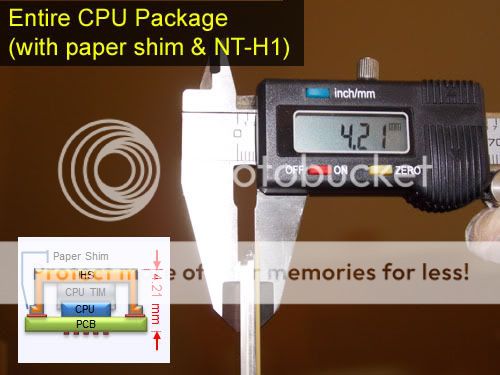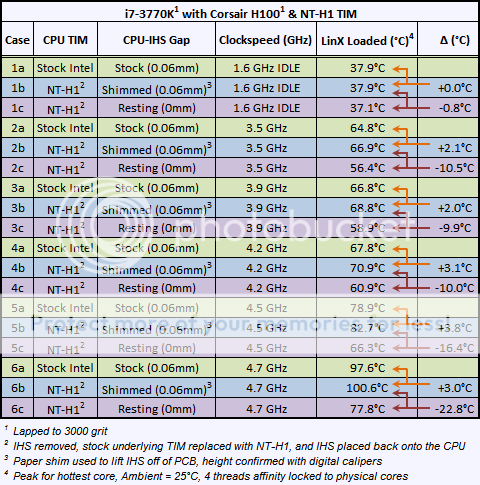It is not surprising that people get different temp improvements when delidding, if a lot of the effect is the gap, that gap is going to vary hence effect should vary. Not only from manufacturing variance in IHS, but the IHS is attached with an adhesive, and that adhesive definitely going to vary in thickness, hence cause corresponding variance in size of gap.
Although pudget systems delidded and tested at stock volts, which will show the least effect, they did state one cpu got 10C better temps by delidding, another only 2C, even though they have a dog in race to show as little benefit as possible. Their conclusion was bad tim application by intel on 1 cpu, but more likely just large gap on one, smaller gap on the other.
Had they tested at overclocking vcore, that 10C would have been closer to what IDC got, and the 2C would have been higher but maybe closer some others that have listed 7-8C better temps.
Yurimans might have been the other extreme, where his gap was very small to begin with, plus testing at lower range 1.2vcore, getting only 4C improvement. But the one issue with that, is like others, those temps are pretty high. I turned off my HTing so running 4 cores, and with 4.4ghz, 1.2 load vcore cpuz ran prime small ffts for 30 mins (I know Yuriman used blend, but I was trying to make mine as hot as possible), and max temp was 65C, most time in 63C range, so at least 10C cooler. And I still have my IHS on.
As for wattage, download HW monitor, if your mobo supports it, will read total package and core watts. On mine at 4.4, 1.2v cpuz load, total package said 77W.












